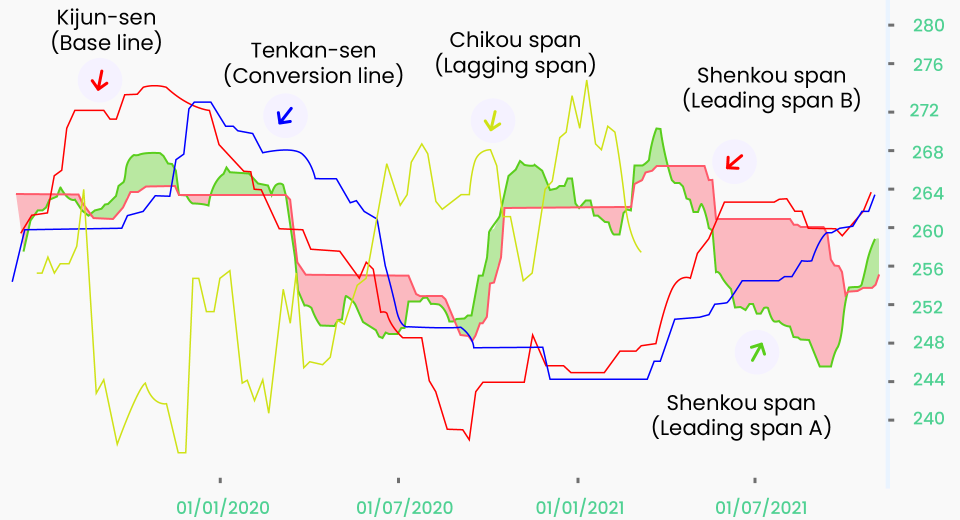The global forex market, valued at $1.93 quadrillion in 2023, is almost 30 times the size of the US stock and bond markets combined! The 24×5 market is the most active financial market, which also makes it among the most sought-after by experienced and beginner traders alike. But given the level of activity and volatility in this market, a robust trading strategy is required to make the most of the plethora of opportunities. But building such a strategy can be challenging for beginners. The 5-3-1 forex trading strategy simplifies that. It helps traders develop a clear trading plan for the forex market. Check out this guide to using the 5-3-1 strategy to up your forex trading game.
Unlike other strategies that focus on timeline and trading mechanisms, the 5-3-1 technique allows traders to narrow down the forex pairs they would like to trade, the trading strategies they want to use and choose the time to trade. Traders use demo accounts to try and test different combinations of currency pairs, strategies and timings to master this technique.
The process helps in laying the foundation for their trading plan. A well-defined plan has more chances of success, can be quantified for assessment and improved as required. Also, it helps traders build a strong forex trading psyche.
Each of the numbers of the 5-3-1 trading strategy has its own significance. Here’s a look.
Select 5 Currency Pairs
The number 5 denotes that traders should select 5 forex pairs that they want to trade. Choosing the right pair to trade sets the tone for developing a trading strategy.
There are three types of currency pairs to choose from:
- Major Pairs: These include the US dollar (USD) on one side and a currency from a developed nation on the other. Major currencies include the euro (EUR), British pound (GBP), Japanese yen (JPY), Swiss franc, (CHF), Canadian dollar (CAD), Australian dollar (AUD) and New Zealand dollar (NZD). So, examples of major pairs are EUR/USD, USD/GBP, AUD/USD, etc.
- Minor Pairs: These are the currency pairs consisting of any two of the major currencies except USD, such as the GBP/EUR, EUR/CHF or CAD/AUD.
- Exotic Pairs: Exotic forex pairs include one major currency and one from an emerging economy, such as the Thai baht (THB), Norwegian krone (NOK), Mexican peso (MXN), South African rand (ZAR), etc. The minor currency may appear as a base or counter currency in an exotic pair.
Also, all currency pairs do not see the same level of activity at all times. Most commonly, the overlapping hours of the London, New York and Hong Kong, see the highest activity levels.
Here’s how traders can pick the most suitable currency pairs.
Create a Watchlist
Traders can begin by creating a watchlist of currencies according to their preferred trading hours. They can pick different times while making the list to gain exposure to a diverse range of forex pairs and associated volatility before making a final decision.
Review the Latest News and Economic Data
This step helps traders identify currencies that are most likely to move based on the data available. Traders also establish their trading preferences by gaining a perspective on the fundamental price movements of the currencies in their watchlists.
Conduct Inter-Market Analysis
Assessing other markets helps establish confluence and discover more opportunities. Confluence is useful, for instance, if oil prices affect the GBP. So, any movement in oil prices could be an indication of a potential move in the GBP as well. All a trader needs to establish through practice is whether the two move in the same direction or inversely. This can be complex for beginners, but once you build an understanding with practice, you can choose to update your tradable forex list from time to time.
Pick 3 Strategies
Choosing the most suitable trading plan is critical because trading ultimately requires a deep understanding of what moves currency pairs, pip by pip.
You can pick up trading strategies based on you risk appetite, trading style and financial goals. So, you could choose from scalping, arbitrage, intra-day trading, high-frequency trading, swing trading, carry trading, and more.
At this stage, you begin technical analysis. You can practice finding entry and exit points for the shortlisted currencies on a demo account. You can also test out diverse indicators with each trading technique to solidify your forex trading strategy. This is also the stage when you learn to incorporate risk management techniques in the strategy. You can use take profits, stop loss or trailing stop-loss, based on your trading strategy and market conditions.
Select a Time to Trade
Since forex trading is available 24×5, it can be tempting to try to capitalise on as many opportunities as possible. However, this has its own downsides. Firstly, traders without defined timelines get exhausted trying to capture every opportunity. No-break trading leads to fatigue that may impair your decision-making ability. Secondly, it leaves you very little time to solidify your trading strategy. Regular monitoring and fine-tuning is required to enhance your chances of success in the forex market.
Picking the same time to trade every day helps build trading discipline. It also helps you gain deeper insights into how the market reacts at a particular time to a news update or an economic event. This is because the supply and demand of each currency can vary at different times of the day, affecting liquidity. Keeping the time consistent can help you gauge whether the needed liquidity is available at a particular hour or not. You can identify the distribution and accumulation zones for your chosen currency pairs to make better informed trading decisions.
Choose the timing that fits your trading plan and provides suitable liquidity for your chosen forex pairs. Experienced traders prefer to pick a time when their chosen currency pairs are the most active. Take into consideration, your daily routine as well.
To Sum Up
- The 5-3-1 forex trading strategy allows traders to pick their favourite forex pairs, trading strategies and trading hours.
- The number 5 stands for choosing 5 currency pairs that a trader would like to trade.
- The number 3 stands for developing 3 strategies with multiple combinations of trading styles, technical indicators and risk management measures.
- The number 1 guides traders to choose the most suitable time for trading. Often, traders choose the overlapping hours of two of the top 3 most active sessions.
- Traders also consider their daily routine while choosing the time to trade.
Disclaimer:
All data, information and materials are published and provided “as is” solely for informational purposes only, and is not intended nor should be considered, in any way, as investment advice, recommendations, and/or suggestions for performing any actions with financial instruments. The information and opinions presented do not take into account any particular individual’s investment objectives, financial situation or needs, and hence does not constitute as an advice or a recommendation with respect to any investment product. All investors should seek advice from certified financial advisors based on their unique situation before making any investment decisions in accordance to their personal risk appetite. Blackwell Global endeavours to ensure that the information provided is complete and correct, but make no representation as to the actuality, accuracy or completeness of the information. Information, data and opinions may change without notice and Blackwell Global is not obliged to update on the changes. The opinions and views expressed are solely those of the authors and analysts and do not necessarily represent that of Blackwell Global or its management, shareholders, and affiliates. Any projections or views of the market provided may not prove to be accurate. Past performance is not necessarily an indicative of future performance. Blackwell Global assumes no liability for any loss arising directly or indirectly from use of or reliance on such information herein contained. Reproduction of this information, in whole or in part, is not permitted.





